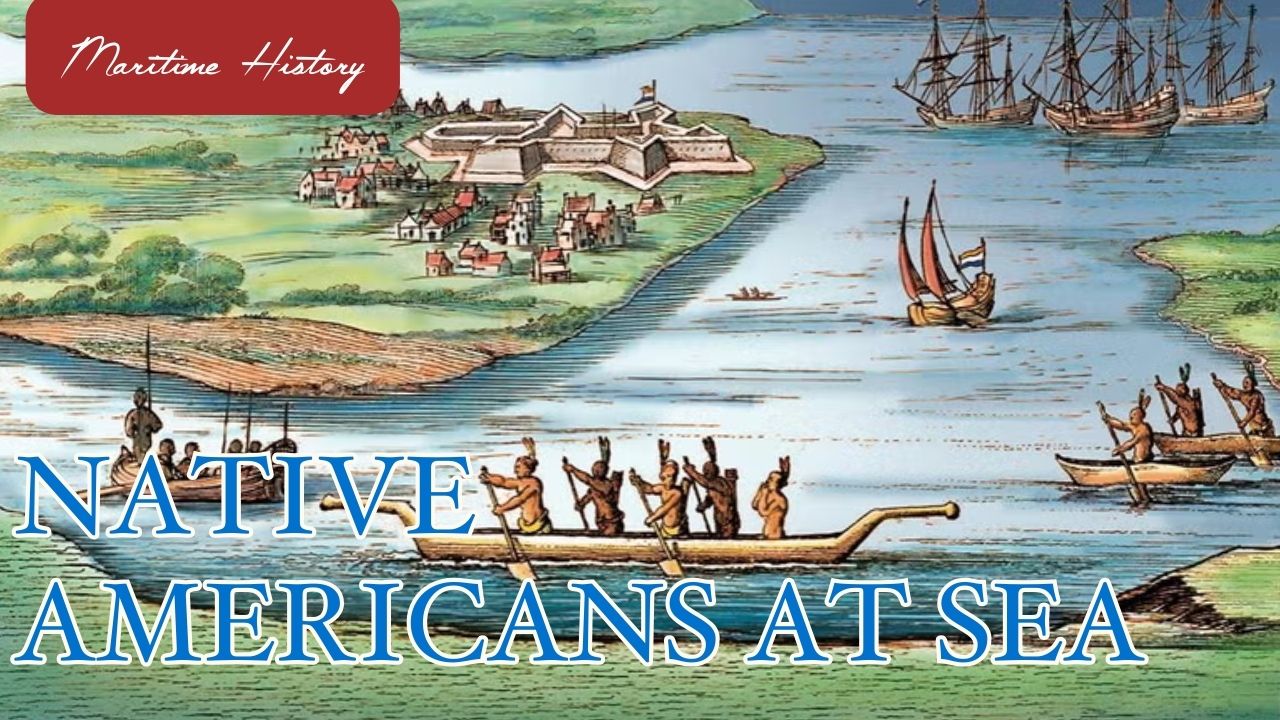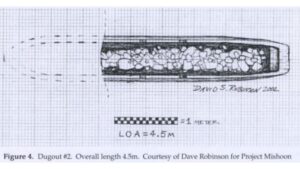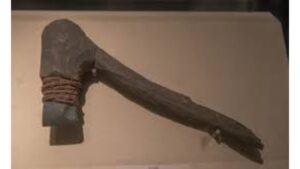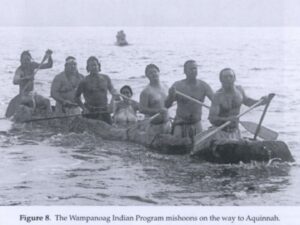
21 Nov Mishoon: Indigenous Seafaring Canoe
This #TallShipTuesday, we learned about how some native communities had seafaring traditions. We also explored their history with the U.S. and Continental Navy. First Nations were, of course, no strangers to the sea. The Mishoon was the most common boat in North American waters in the 17th century, but these canoes are much older than that. The use and creation of these boats have a tradition going back 10,000 years.
For the last few centuries, this tradition has not been as widely practiced. After the expulsion of natives from their homes and the genocide of the people and culture, local tribes lost much of the practice. The Mashpee Wampanoag, the Shinnecock, and other indigenous groups in the Northeast U.S. have made great strides in the past few years to bring back this long standing tradition. Mishoons began their resurgence with the Dugout Canoe Project in 2006. Using old records, they began the process of creating a mishoon. The first time in that part of the northeast in centuries.
Documentation of the Process
Most written records of the process that survive today come from European observations of the process. Samuel de Champlain wrote in 1613 about the process.
“They take off the bark and round it all but one side, where they set fires every little way all along the log. Sometimes they take red-hot pebbles, which they also put on it, and when the fire is too fierce they extinguish it with a little water, not entirely, but only enough to prevent the edge of the canoe from being burned. When it is as much hollowed out as they wish, they scrape it all over with stones. The pebbles with which they do the cutting are like our musket flints.”
Roger Williams. wrote another account used to inform the original attempts to recreate these canoes. In Rhode Island in 1643, he recorded that he saw a native man,
“Goe into the woods with his hatchet, carrying onely a Basket of Corne with him, & stones to strike a fire when he had feld his tree (being a chestnut) he made him a little house or shed of bark of it, he puts fire and follows the burning of it with fire, in the midst in many places: his corne he boyles and hath the Brook by him, and sometimes angles for a fish; but so hee continues burning and hewing until he hath within ten or twelve days (lying there at his worke alone) finished, and (getting hands) launched his boate; with which afterward hee ventures out to fish in the Ocean.”
What we can glean from these firsthand accounts

It took these 17th century indigenous people an extensive amount of time to make just one of these mishoon. Sometimes they worked alone, sometimes with others, but the methods remained the same.

They felled trees that were very tall and very old using a stone axe. Some records have these trees measuring 20-30 feet. They would burn the insides of these massive old growth trees and hollow them out with stones or sharp tools. To burn the canoes, they took wood and started a controlled slow burn of the insides. They stoked the fire and maintained it for days at a time. Between each layer, native people then scraped the insides of the canoe with a tool like a stone adze (pictured to the right).
Appearance and use of the Mishoon

There are various reports of the appearance of these crafts. Traditionally it seems that there were various sizes of these canoes, and each had a different name. “Mishittouwand” was a great canoe, “peewasu” was a small canoe, “paugautemissaund” meant oak canoe, and “kowawwaund” was a pine canoe.
17th century natives navigated inland waters and the ocean by rowing “chemoshchemeck” or even using basic sails set on small poles. There is also record to suggest that mishoon were used for transportation, naval battles between opposing canoe fleets, and for fishing using harpoons and nets.
Further Reading
– Much of the information about firsthand accounts and details of the mishoon came from this article detailing the early attempts at re-building one of these seafaring canoes.
– Smithsonian Account on Mishoon re-creation in 2013
– Boston Harbor Island National and State Park






Sorry, the comment form is closed at this time.